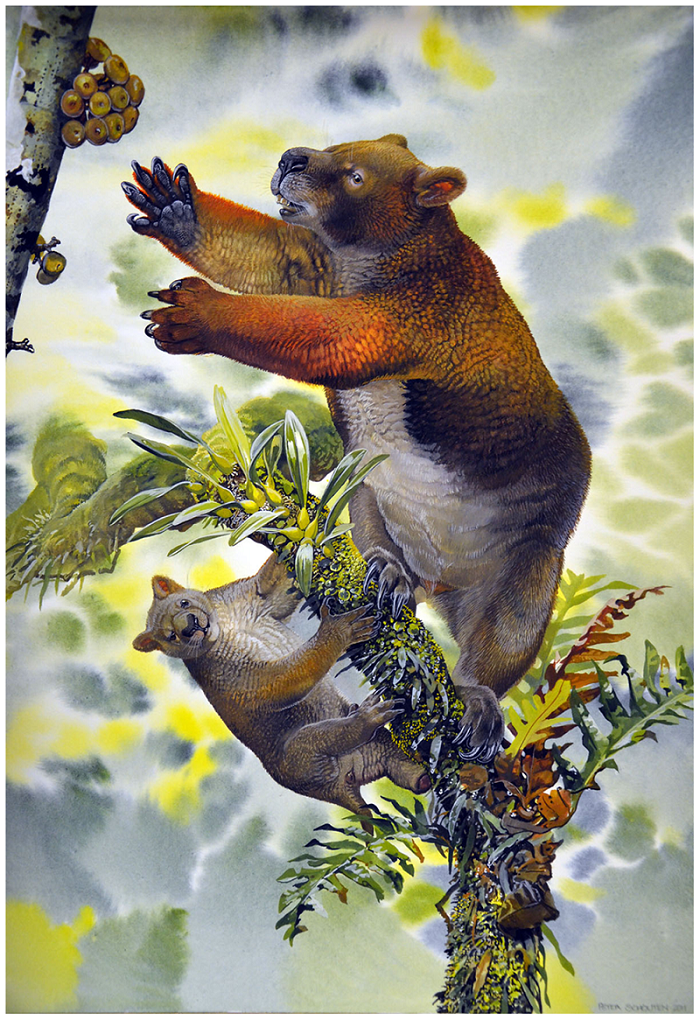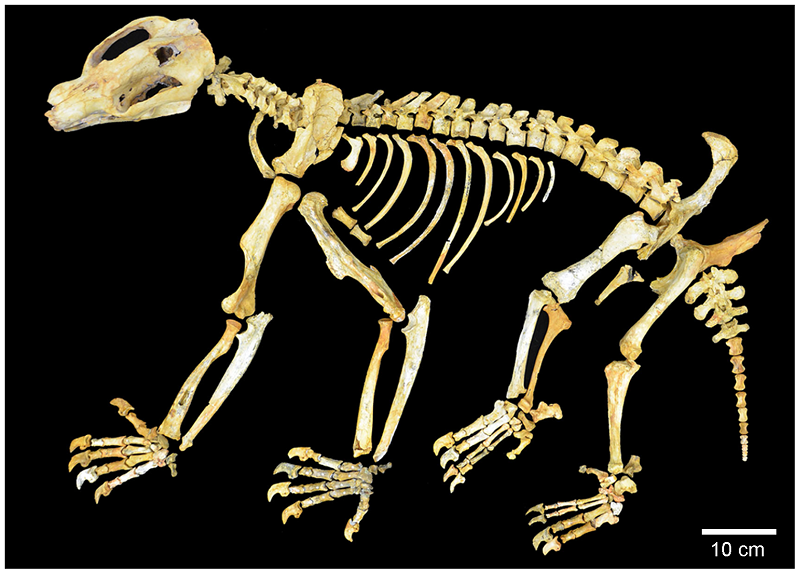Massive Marsupials Once Swung from Treetops Down Under

Some 15 million years ago, mobs of 150-pound (70-kilogram) marsupials roamed the treetops of Australia's rain forests, researchers say.
Nimbadon lavarackorum belonged to a family of large-bodied marsupials known as the diprotodontids that went extinct about 11,000 years ago. During the diprotodontids' reign in Australia, they ranged from sheep-size wombatlike creatures to the mega-herbivore Diprotodon, which stood at 13 feet (4 meters) tall and weighed up to 6,100 pounds (2,800 kg).
Nimbadons were on the small-end of this spectrum, and they lived during the Middle Miocene (about 16 million to 11.6 million years ago). These ancient marsupials are best known from 26 different specimens found at the bottom of a vertical cave in northwestern Queensland, where a group of them apparently plunged to their deaths. In a new study, researchers examined Nimbadon bones and compared them with other species to get a clearer picture of how these ancient animals might have lived.
The researchers said they found striking similarities between Nimbadon skeletons and those of current koalas, including strong forelimbs, large claws and highly mobile shoulder and elbow joints. These features, combined with the Nimbadon's short hind limbs, suggest that the animals had excellent climbing and grasping skills and also could have used their long, flexible arms to suspend themselves from branches and reach for food and supports.
Even though the diprotodontids were thought to have lived on the ground, all these characteristics point to a life in the trees, which would make Nimbadons the largest herbivorous mammals to have ever lived in the forest canopies of Australia — an ecological niche that is now empty, the researchers say.
"The findings presented here indicate that we are only beginning to understand the range of morphological and niche diversity displayed by this ecologically important and widespread group of Australasian marsupials — the diprotodontids," the researchers concluded.
The study, led by a team from the University of New South Wales in Sydney, was published online Nov. 21 the journal PLoS ONE.
Get the world’s most fascinating discoveries delivered straight to your inbox.
Follow LiveScience on Twitter @livescience. We're also on Facebook & Google+.




